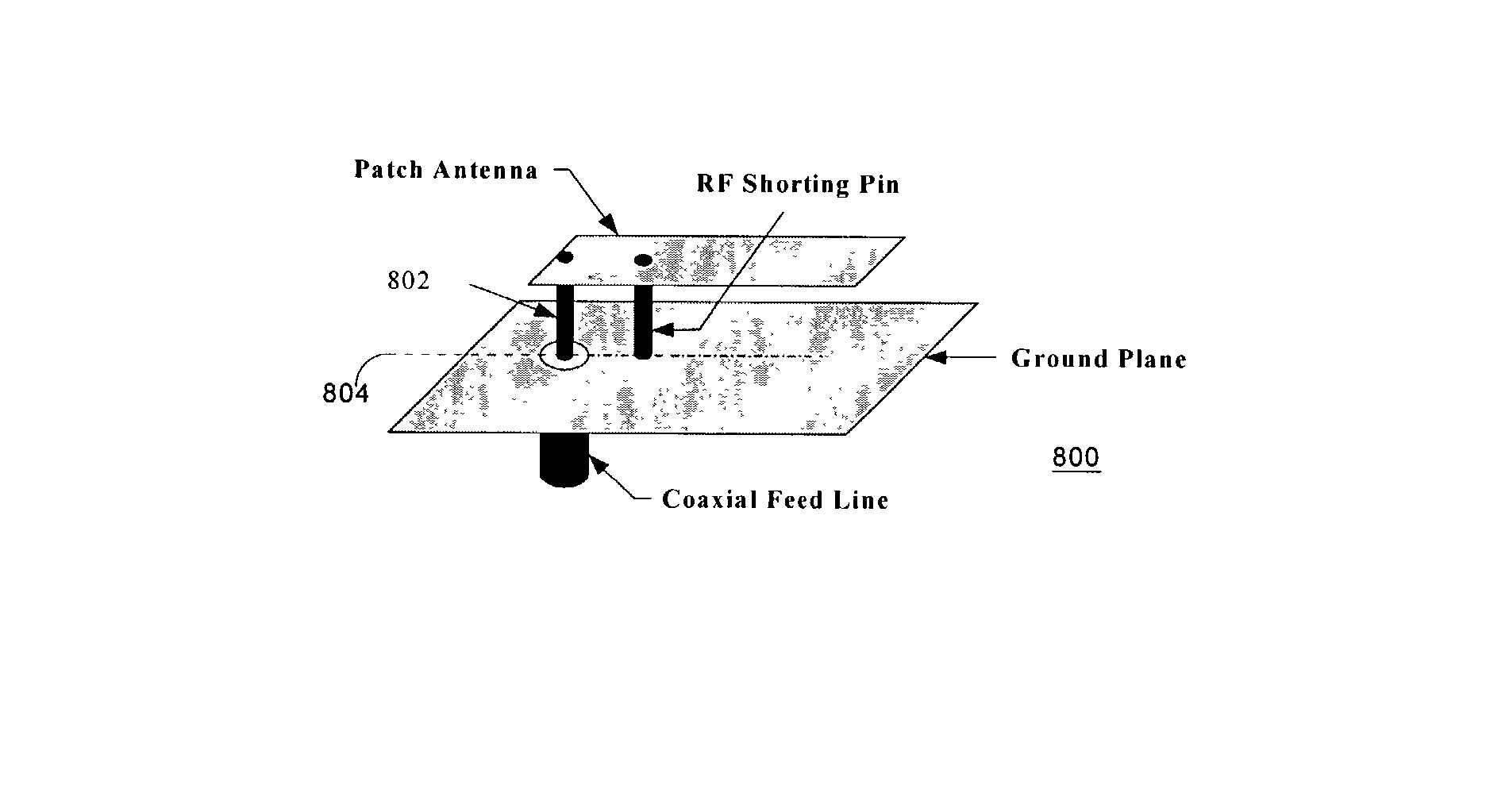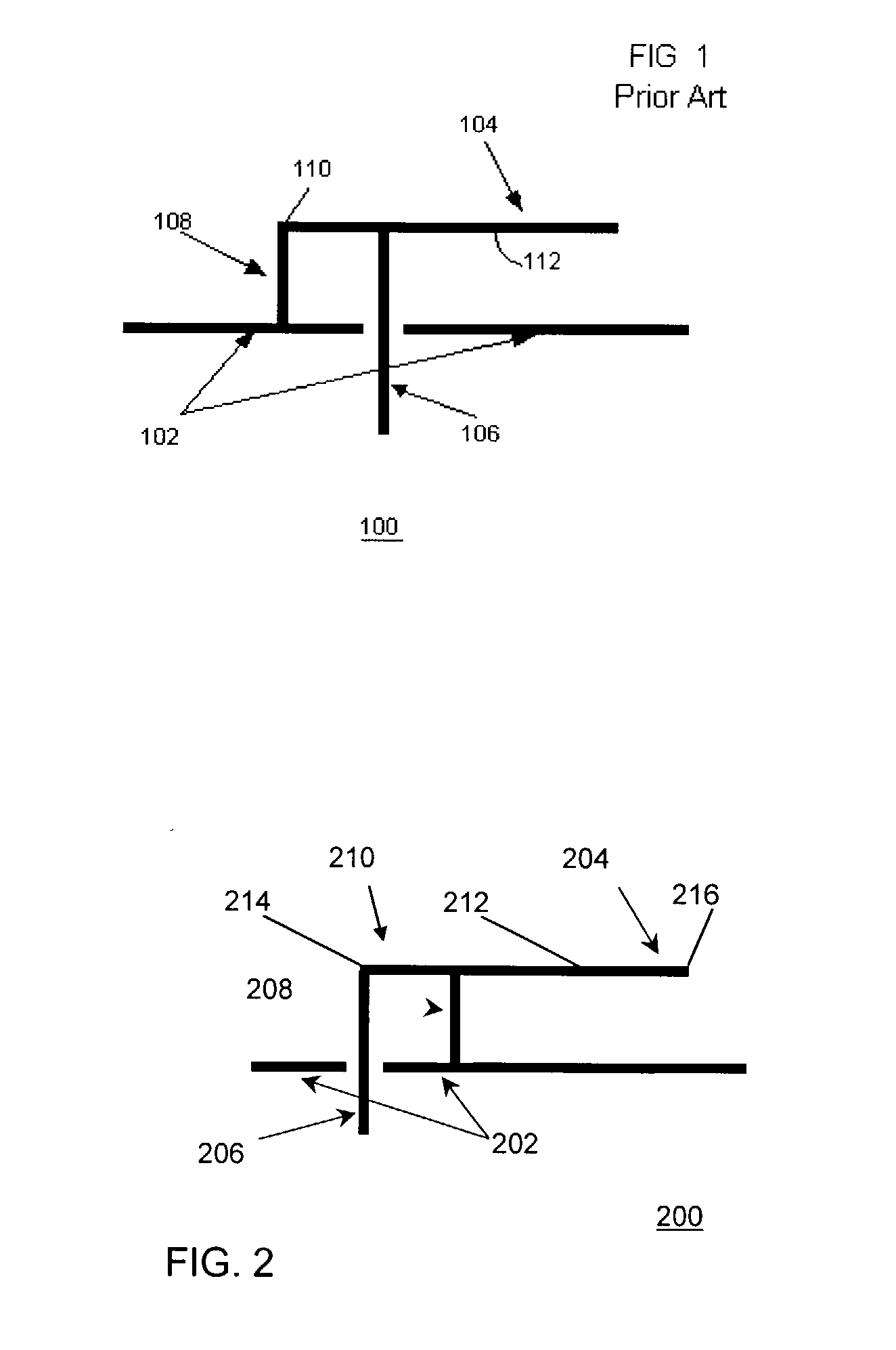Miniaturized reverse-fed planar inverted F antenna
a reverse-fed planar and antenna technology, applied in the direction of antennas, antenna details, electrical equipment, etc., can solve the problems of not meeting the present design of the antenna, the product space of the manufacture of wireless devices such as handsets, pda's and laptops is very small,
- Summary
- Abstract
- Description
- Claims
- Application Information
AI Technical Summary
Benefits of technology
Problems solved by technology
Method used
Image
Examples
Embodiment Construction
[0022] Referring now to the drawing, FIG. 1 is a diagram showing a cross sectional view of a conventional planar inverted-F antenna (PIFA) 100. The PIFA 100 includes a ground plane 102 and a radiating element 104. The conventional PIFA 100 is defined with a feed 106 positioned between a shorted end 110 and a radiating portion 112 of the radiating element 104. A radio frequency (RF) short 108 electrically shorts the shorted end 110 of the radiating element 104 to the ground plane.
[0023] The embodiment of the conventional PIFA 100 shows the basic elements of the device. The feed engages the radiating element at a feed point which is offset from the RF ground of the radiating element 104. However, in the conventional device, the feed point is positioned between the RF ground, which engages the radiating element at the shorted end 110 of the radiating element 104.
[0024] FIG. 2 shows a cross sectional view of a reverse-fed planar inverted F antenna (RFPIFA) 200. The RFPIFA includes a gro...
PUM
 Login to View More
Login to View More Abstract
Description
Claims
Application Information
 Login to View More
Login to View More - R&D
- Intellectual Property
- Life Sciences
- Materials
- Tech Scout
- Unparalleled Data Quality
- Higher Quality Content
- 60% Fewer Hallucinations
Browse by: Latest US Patents, China's latest patents, Technical Efficacy Thesaurus, Application Domain, Technology Topic, Popular Technical Reports.
© 2025 PatSnap. All rights reserved.Legal|Privacy policy|Modern Slavery Act Transparency Statement|Sitemap|About US| Contact US: help@patsnap.com



